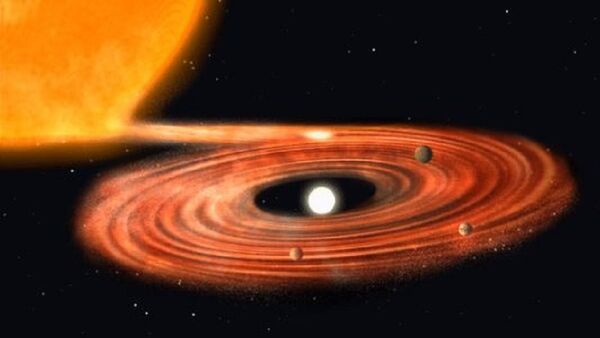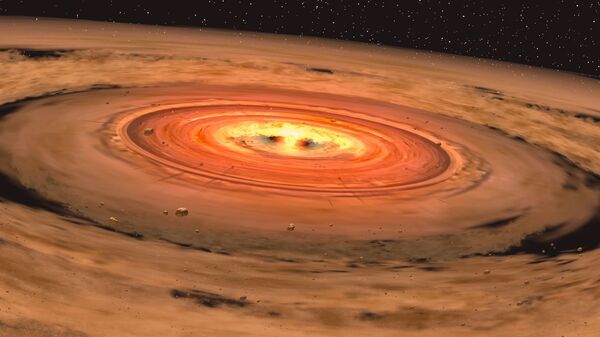Brought to you by the National Research Nuclear University MEPhI
An international team of researchers, which includes scientists from the MEPhI National Research Nuclear University, has conducted laboratory modeling of the mass accretion of a celestial body with the gravitational attraction of matter from the surrounding space. The results were published in Science Advances.
READ MORE: New Possibly Habitable Exoplanet Found in the Depths of Space
The study of accretion sheds light on the exchange of mass and energy of the "collecting" object and its surroundings, and on their mutual location. It is this process that is responsible for the formation of planetary systems around stars. The phenomenon often accompanies the development of young stars, and is manifest in binary systems where a black hole acts as a "receptor" and a neutron star as the "donor."
READ MORE: Darkest Material on Earth to Create a 'Schism in Space' for Winter Olympics
The surrounding matter (e-plasma, a "gas" of individual ions and electrons) and the young star are connected by a magnetic field that affects the particles in plasma, changing their trajectories and sending them toward the star at supersonic speeds. The shock-heats the matter to several million degrees to produce excessive UV and X-ray emissions in what is called an accretion column, which may change the physical and chemical structures around the young star.
There are many limitations associated with the observation and modeling of astrophysical processes. For instance, live observation of stars and the measurement of various parameters may lead to discrepancies over the same parameter. Thus, large-scale laboratory experiments help look at accretion processes from a new angle.

The study, in which MEPhI researchers took part, produced a new experimental platform that ensures the homogeneity of the external magnetic field for the maximum approximation of astrophysical events. The findings obtained through the new laboratory approach and the use of a new platform have produced the first direct evidence of the formation of a dense shell of ionized plasma that envelops the central area of matter inflow.
READ MORE: 'Weird and Exceptional': ESO Astronomer Talks to Sputnik About 'Scout' Asteroid
The researchers have shown that post-shock matter can be ejected before being aligned by a magnetic field toward the incoming flow. The formation of a plasma shell enveloping the shocked core may lead to a reduction in X-ray emissions. The finding may be the possible explanation for the discrepancy between measurements obtained through optical and x-ray observation.
"Our results emphasize the need for a proper accounting of emission absorption in plasma for the correct modeling of accretion in young stars. The laboratory platform we developed makes it possible to study a number of puzzles. For example, by changing the flow orientation relative to the magnetic field we can study alternative channels of accretion," Yevgeny Filippov says about the conclusions. Filippov is a researcher at MEPhI's Institute of Laser and Plasma Technology and co-authored the article.

